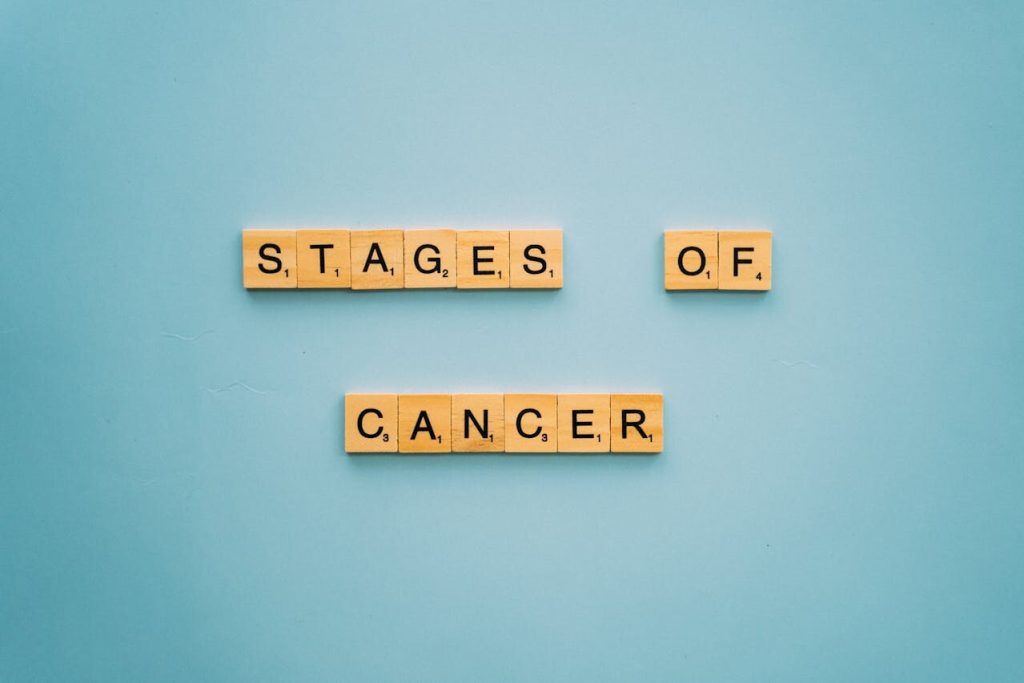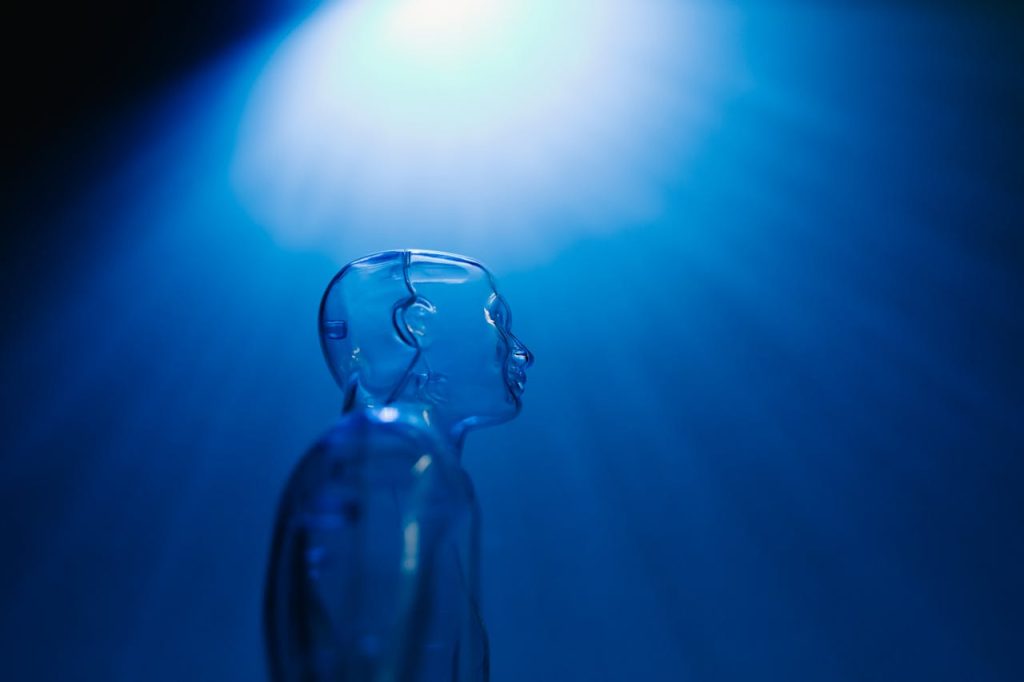Retromolar trigone pain is a type of orofacial pain that affects the area located at the back of the mouth. This pain can be caused by a variety of factors, including dental issues, infections, nerve damage, and trauma. Symptoms can range from mild discomfort to severe pain that can interfere with daily activities such as eating and speaking.
In this article, we’ll explore the retromolar trigone in detail, including its anatomy and role in dental health. We’ll also discuss the causes, symptoms, and treatment options for retromolar trigone pain.
Key Takeaways:
- Retromolar trigone pain is a type of orofacial pain that affects the back of the mouth.
- It can be caused by a variety of factors, including dental issues, infections, nerve damage, and trauma.
- Symptoms can range from mild discomfort to severe pain that can interfere with daily activities.
- Treatment options include medication, oral hygiene practices, dental procedures, and alternative therapies.
- The Cancer Center for Healing offers a comprehensive holistic approach to managing retromolar trigone pain.
- It’s important to seek professional care for retromolar trigone pain and to explore personalized treatment plans.
What is the Retromolar Trigone?
The retromolar trigone is a small triangular area located at the back of the mouth, just behind the wisdom teeth. It is bordered by the last molar tooth, the mandible bone, and the inner cheek lining. The trigone consists of soft tissues, including muscles, nerves, and blood vessels, and plays a pivotal role in the functionality of the jaw, as well as oral health.
The retromolar trigone is innervated by the trigeminal nerve, which is responsible for transmitting sensations from the face and mouth to the brain. This nerve also controls the muscles involved in chewing and speaking. Any issues that affect the trigone can lead to pain, discomfort, and functional impairment.
Introducing Retromolar Trigone Pain
The retromolar trigone is a small triangular area located in the back of the oral cavity where the lower wisdom teeth meet the gums. While it may not receive much attention, pain in this area, known as retromolar trigone pain, can be a significant source of discomfort and affect a person’s daily activities such as eating and speaking.
Retromolar trigone pain can present as a sharp, shooting pain that may radiate to the ear, throat, or jaw. It can be caused by various factors, including dental issues, infections, nerve damage, and trauma. It is more common in middle-aged and older adults and may be associated with trigeminal nerve pain.
Managing retromolar trigone pain can be challenging, as it often requires a multidisciplinary approach to address the underlying cause and manage symptoms effectively. Seeking professional care is vital in managing retromolar trigone pain and achieving long-term relief.
Causes of Retromolar Trigone Pain
Retromolar trigone pain can have a variety of causes, including dental issues, infections, nerve damage, and trauma. Here are some of the most common causes:
| Cause | Description |
|---|---|
| Dental problems | Tooth decay, gum disease, or oral surgery can all lead to pain in the retromolar trigone. This is because the trigone shares nerve pathways with the teeth and gums. |
| Infections | An infection in the retromolar trigone, such as a salivary gland infection or an abscess, can cause pain and swelling in the area. |
| Nerve damage | Damage to the trigeminal nerve, which runs through the retromolar trigone, can cause chronic pain in the area. This condition is known as trigeminal neuralgia. |
| Trauma | An injury to the retromolar trigone, such as a blow to the jaw or surgery, can cause pain and discomfort in the area. |
H3: Dental Problems
One of the most common causes of retromolar trigone pain is dental problems. Tooth decay, gum disease, or oral surgery can all lead to pain in the trigone. This is because the trigone shares nerve pathways with the teeth and gums. Pain caused by dental issues is usually localized to the affected tooth or area of the gums, but it can sometimes spread to the retromolar trigone.
H3: Infections
An infection in the retromolar trigone can cause pain and swelling in the area. Salivary gland infections, abscesses, and other types of infections can all lead to pain in the trigone. In some cases, the pain may be accompanied by other symptoms, such as fever, redness, and swelling.
H3: Nerve Damage
Damage to the trigeminal nerve, which runs through the retromolar trigone, can cause chronic pain in the area. This condition is known as trigeminal neuralgia. Trigeminal neuralgia causes intense, sharp, shooting pain that can be triggered by even minor stimuli such as touching the face or brushing the teeth. The condition can be caused by a variety of factors, including multiple sclerosis, tumors, and blood vessel abnormalities.
H3: Trauma
An injury to the retromolar trigone, such as a blow to the jaw or surgery, can cause pain and discomfort in the area. Trauma can lead to inflammation, nerve damage, or other issues that cause pain. The severity of the pain will depend on the extent of the injury, as well as any associated complications.
Symptoms of Retromolar Trigone Pain
Retromolar trigone pain can present itself in a variety of ways. Common symptoms include:
- Localized pain and discomfort: Pain is usually felt in the back of the mouth near the wisdom teeth and can range from mild to severe.
- Difficulty swallowing: As retromolar trigone pain is often associated with dental issues, it can be difficult to eat or drink without experiencing discomfort.
- Referred pain: Sometimes, the pain in the retromolar trigone can spread to the ear, throat, or neck, causing discomfort in those areas as well.
- Numbness or tingling: In some cases, retromolar trigone pain can be associated with nerve damage, causing numbness or tingling in the affected area.
If you are experiencing any of these symptoms, it is important to seek professional care to determine the underlying cause of your pain and develop an appropriate treatment plan.
Diagnosing Retromolar Trigone Pain
Diagnosing retromolar trigone pain is a complex process that typically involves a combination of physical examinations, dental imaging, and potential referrals to specialists. Since the trigeminal nerve is involved in many cases of retromolar trigone pain, healthcare professionals may use specific tests to evaluate its function.
A dentist or specialist will typically start by conducting a thorough medical history and dental examination to determine the possible causes of retromolar trigone pain. This may include an assessment of the individual’s oral hygiene practices, dental health, history of trauma or injury, and potential nerve damage.
Imaging tests, such as X-rays, CT scans, or MRI scans, may be used to examine the area in more detail and identify any potential structural abnormalities or underlying dental issues. In some cases, a biopsy or tissue culture may be necessary to rule out potential infections or tumors.
Trigeminal Neuralgia Pain
In cases where trigeminal neuralgia pain is suspected, healthcare professionals may use specific diagnostic tests, such as a sensory examination or a reflex test, to evaluate the function of the trigeminal nerve. They may also conduct additional imaging tests, such as an MRI or MRA, to rule out any potential nerve compression or damage.
Since retromolar trigone pain can have many different causes and symptoms, it is important to seek professional care as soon as possible to determine the underlying issue and develop an appropriate treatment plan.
Treatment Options for Retromolar Trigone Pain
When it comes to managing retromolar trigone pain, there are a number of treatment options available. Depending on the cause and severity of the pain, different modalities may be more effective than others. Below are some of the most common treatments used to manage retromolar trigone pain.
| Treatment Option | Description |
|---|---|
| Medication | Over-the-counter pain relievers like ibuprofen or acetaminophen can be an effective first-line treatment for mild to moderate retromolar trigone pain. For more severe pain, prescription medications like opioids or muscle relaxants may be necessary. |
| Oral hygiene practices | Keeping the mouth clean and healthy can go a long way in managing retromolar trigone pain. Brushing and flossing regularly, using an alcohol-free mouthwash, and staying hydrated can help prevent infections and reduce discomfort. |
| Dental procedures | If the pain is caused by an underlying dental issue, such as a cavity or gum disease, dental treatment may be necessary. This can include fillings, root canals, or extractions, depending on the severity of the issue. |
| Alternative therapies | Some people find relief from retromolar trigone pain through alternative therapies like acupuncture, chiropractic adjustments, or massage therapy. While the evidence for these treatments is limited, they may be worth considering if other treatments have not been effective. |
It’s important to note that managing retromolar trigone pain often requires a personalized approach. What works for one person may not work for another. In addition to the treatments listed above, there are a number of other strategies that can be helpful for managing pain, including:
- Stress management techniques, such as meditation or deep breathing
- Self-care practices, such as getting enough rest, staying active, and eating a healthy diet
- Lifestyle modifications, such as avoiding foods that trigger pain or discomfort
Conclusion
Overall, there are a variety of treatment options available for managing retromolar trigone pain. If you are experiencing pain or discomfort in the retromolar trigone area, it’s important to seek professional care to determine the underlying cause and develop a personalized treatment plan. With the right approach, it is possible to manage retromolar trigone pain effectively and improve your quality of life.
The Holistic Approach at the Cancer Center for Healing
At the Cancer Center for Healing, located in Irvine, CA, patients can benefit from a holistic approach to cancer care under the direction of Dr. Leigh Erin Connealy. The Cancer Center for Healing is committed to providing personalized treatment plans that address the root cause of illness, rather than simply treating symptoms.
The center’s holistic approach encompasses a range of treatment modalities to support the body’s natural healing mechanisms. In addition to conventional medical treatments, patients have access to complementary therapies, nutritional counseling, detoxification protocols, and mind-body practices.
The Cancer Center for Healing takes a multidisciplinary approach to care, drawing upon the expertise of a team of healthcare professionals to provide comprehensive support to patients throughout their treatment journey.
Managing Retromolar Trigone Pain with Holistic Care
At the Cancer Center for Healing, managing retromolar trigone pain involves a holistic approach to care that focuses on addressing the root cause of the pain while also providing relief for immediate discomfort. Dr. Leigh Erin Connealy and her team of experts understand the interconnectedness of the body, mind, and spirit, and they work closely with patients to create personalized treatment plans that incorporate a range of holistic modalities.
| Some of the holistic treatment options available for managing retromolar trigone pain include: |
|---|
| Acupuncture: This ancient Chinese therapy involves placing thin needles at specific points on the body to restore energy balance and alleviate pain. |
| Massage therapy: Gentle massage can ease muscle tension and promote relaxation, which can be particularly helpful for patients prone to stress-induced pain. |
| Nutrition counseling: A healthy diet that is rich in whole foods can provide the body with the nutrients it needs to heal and function optimally. |
| Mind-body techniques: Meditation, yoga, and other mindfulness practices can help patients manage pain and stress, while also promoting mental and emotional wellbeing. |
| Herbal medicine: Certain herbs and supplements can be used to address underlying imbalances in the body that contribute to pain and dysfunction. |
It is important to note that not all holistic treatments are appropriate for everyone, and that each patient’s treatment plan will be tailored to their unique needs and goals. At the Cancer Center for Healing, patients receive comprehensive care that addresses their physical, emotional, and spiritual needs, with the goal of achieving sustainable, long-term healing.
Consulting with a Holistic Practitioner
If you are experiencing retromolar trigone pain and are interested in exploring holistic treatment options, it is important to consult with a qualified practitioner who can guide you through the process. The Cancer Center for Healing offers consultations with Dr. Leigh Erin Connealy and her team of specialists, who can provide an individualized assessment of your needs and recommend a course of treatment that is tailored to your unique situation. To schedule a consultation, contact the Cancer Center for Healing at [insert phone number] or visit their website for more information.
Scheduling a Consultation at the Cancer Center for Healing
If you are experiencing retromolar trigone pain, it is important to seek professional care. The Cancer Center for Healing in Irvine, CA, offers a comprehensive approach to cancer care and pain management under the guidance of Dr. Leigh Erin Connealy. To schedule a consultation, please call [insert phone number] or visit us at our location [insert address]. Our team of experienced professionals will work with you to create a personalized treatment plan and help you manage your pain effectively.
Other Management Strategies for Retromolar Trigone Pain
Along with seeking professional care, there are several other strategies that individuals can use to manage their retromolar trigone pain:
- Self-care techniques: Applying heat or ice to the affected area, practicing relaxation techniques such as meditation or deep breathing, and avoiding triggers such as certain foods or activities may help reduce pain levels.
- Stress management: Stress can exacerbate pain, so finding ways to manage stress levels such as participating in regular exercise, getting enough sleep, and seeking support from friends and family can be helpful.
- Lifestyle modifications: Making lifestyle changes such as quitting smoking, improving oral hygiene practices, and maintaining a healthy diet can also aid in pain management.
It is important to note that these strategies may not be effective for everyone and should be used in conjunction with professional medical care. Consulting with a healthcare provider to develop a personalized treatment plan is the best course of action for managing retromolar trigone pain.
Research and Future Developments in Retromolar Trigone Pain
Research into the underlying causes and effective treatments for retromolar trigone pain is ongoing, with the ultimate goal of improving patient outcomes and quality of life. One area of focus is trigeminal neuralgia, a condition that can cause intense facial pain, including retromolar trigone pain, due to irritation of the trigeminal nerve.
Recent studies have investigated potential new treatment modalities for trigeminal neuralgia, including minimally invasive surgery, nerve stimulation techniques, and targeted drug therapies. These approaches aim to alleviate pain while minimizing the risks associated with conventional surgical interventions.
In addition, researchers are exploring the use of stem cells and other regenerative medicine techniques to repair damaged nerve tissue and reduce pain. This field is still in its early stages, but it holds promise for patients with chronic and debilitating pain syndromes.
Looking ahead, the future of retromolar trigone pain management may involve a more personalized and patient-centric approach, with a focus on integrative and holistic therapies. As we gain a better understanding of the underlying mechanisms of pain, we may be able to develop more targeted and effective treatment plans that address the unique needs and preferences of each patient.
Conclusion
Retromolar trigone pain can greatly impact an individual’s quality of life, making it important to seek professional care for effective management. From exploring the causes and symptoms to discussing various treatment modalities, it is evident that there are multiple options available for managing retromolar trigone pain, including a holistic approach at the Cancer Center for Healing.
Readers are encouraged to take proactive steps towards managing their pain and to consider all available options. Ongoing research and future developments in the field of retromolar trigone pain management may lead to more effective treatment options in the future. However, it is important to seek professional care in the present to alleviate discomfort and improve overall oral health.
FAQ
Q: What is the Retromolar Trigone?
A: The retromolar trigone is a small triangular region located behind the last molar teeth in the oral cavity. It plays an important role in dental health and is often associated with pain and discomfort.
Q: What is Retromolar Trigone Pain?
A: Retromolar trigone pain refers to the discomfort experienced in the retromolar trigone area. It can affect daily activities such as eating and speaking, and is relatively common among individuals with dental issues or infections.
Q: What are the Causes of Retromolar Trigone Pain?
A: The causes of retromolar trigone pain can vary and may include dental problems, infections, nerve damage, and trauma to the area. These factors can contribute to localized pain and discomfort in the retromolar trigone area.
Q: What are the Symptoms of Retromolar Trigone Pain?
A: Common symptoms of retromolar trigone pain may include localized discomfort, difficulty swallowing, and referred pain to the ear or throat. These symptoms can significantly impact an individual’s quality of life.
Q: How is Retromolar Trigone Pain Diagnosed?
A: Diagnosing retromolar trigone pain typically involves a physical examination, dental imaging, and potential referrals to specialists. These diagnostic procedures help identify the underlying cause of the pain and guide appropriate treatment.
Q: What are the Treatment Options for Retromolar Trigone Pain?
A: Treatment options for retromolar trigone pain may include medication, oral hygiene practices, dental procedures, and alternative therapies. These modalities aim to alleviate pain and improve overall oral health.
Q: What is the Holistic Approach at the Cancer Center for Healing?
A: The Cancer Center for Healing, under the guidance of Dr. Leigh Erin Connealy, offers a holistic treatment approach. They provide comprehensive cancer care that focuses on addressing physical, mental, and emotional well-being.
Q: How can Holistic Care Manage Retromolar Trigone Pain?
A: At the Cancer Center for Healing, various holistic treatment modalities are available to manage retromolar trigone pain. A personalized treatment plan and a multidisciplinary approach are emphasized to address the specific needs of each individual.
Q: How can I Schedule a Consultation at the Cancer Center for Healing?
A: To schedule a consultation at the Cancer Center for Healing, please contact our office at [phone number]. Our dedicated team will assist you in arranging an appointment and provide further information on our services.
Q: What are other Management Strategies for Retromolar Trigone Pain?
A: In addition to professional care, other management strategies for retromolar trigone pain include self-care techniques, stress management, and lifestyle modifications. These can complement medical treatments and improve overall well-being.
Q: What is the Research and Future Developments in Retromolar Trigone Pain?
A: Ongoing research is being conducted to further understand and improve the management of retromolar trigone pain. Future developments in this field may lead to enhanced treatment options and improved outcomes for affected individuals.






